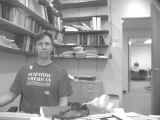 |
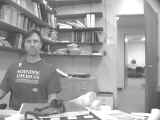 |
| Left image |
Right image |
|
Uncalibrated
Images (640x480, full frame)
Here are a set of uncalibrated stereo images from the
MEGA-D stereo head with an 8.5 mm lens, 57 degree field-of-view
(click on the thumbnails for a full-size image). Although the lenses are
quite good, there is still some curvature in the door at the right edge
of the picture, a sure sign of lens distortion. Also, the images are not
aligned vertically. There are other subtle problems, such as rotational
differences, that are harder to determine by inspection.
|
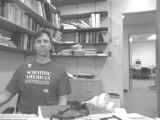 |
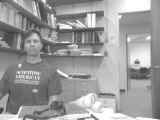 |
| Left image |
Right image |
|
Calibrated
Images (640 x 480, full frame)
These images are the calibrated versions of the ones above. Lens
distortion has been removed, and as a consequence the images have
expanded by a little. All scene lines are now straight in the images.
The vertical offset has been removed. There are still horizontal offsets
for close objects, but far objects appear at about the same horizontal
point in each image.
|
|
|
Wide-Angle
Lens Example
The calibration procedure can produce rectified images
even from severely distorted images. The images at left were
produced with OmniTech's 1.3 mm hemispheric lens. When calibrated,
the images are rectified to remove the large radial distortion of the
lens. Note the blurring of the edges of the image, caused by low
resolution from that portion of the original image.
|
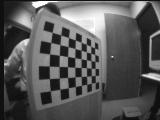 |
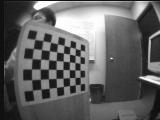 |
|
Target Left Image |
Target Right Image |
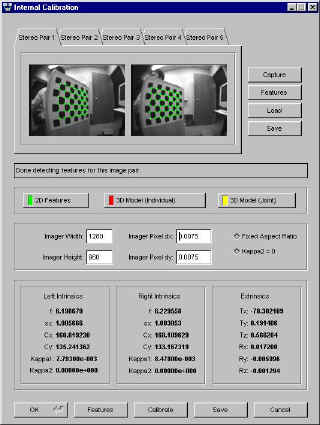 |
|
How It's Done
The Small Vision System software contains a calibration procedure
that uses a simple planar calibration target. This procedure is
automatic, and works with any set of stereo cameras and lenses,
including the MEGA-DCS, or user-supplied stereo rigs.
The calibration procedure shows a dialog that lets the user capture a
set of up to 10 stereo pairs with the planar target. The target itself is
supplied with the SVS software as a PDF file that can be printed on
a standard printer, then pasted onto a flat surface. The image below
shows a sample calibration pair.
After acquiring at least five image pairs with the target in different
(arbitrary) positions, the calibration algorithm finds corner features
automatically for all the targets, and then computes an appropriate set
of transformation parameters to correct for internal distortions and the
external position of the cameras. |

